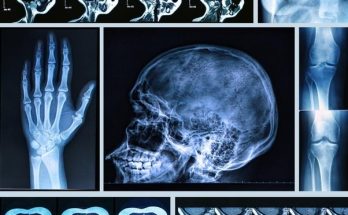Manual and Automatic Treatment Planning in Radiotherapy
Treatment planning is the cornerstone of effective radiotherapy. It involves determining the optimal radiation dose distribution to deliver to the tumor while minimizing damage to surrounding healthy tissues. This process can be broadly categorized into manual and automatic (computer-aided) methods.
I. Manual Treatment Planning:
Manual treatment planning, while largely superseded by computer-aided planning for complex cases, remains relevant for understanding fundamental principles and may still be used in resource-constrained environments or for very simple treatments.
- Contouring:
- This is the crucial first step. It involves delineating the target volumes (tumor and any involved lymph nodes) and organs at risk (OARs) on a series of CT or MRI images.
- Target Volume Delineation:
- Gross Tumor Volume (GTV): The visible or palpable tumor mass.
- Clinical Target Volume (CTV): The GTV plus a margin to account for microscopic spread of disease.
- Planning Target Volume (PTV): The CTV plus additional margin to account for patient motion, setup uncertainties, and other factors that could affect accurate dose delivery.
- Organs at Risk (OARs): Normal tissues whose radiation dose should be limited to avoid complications. Examples include the spinal cord, lungs, heart, kidneys, and eyes. Contouring these is essential for plan optimization.
- Methods: Historically done on film-based radiographs, contouring is now primarily performed on digital images using specialized software. It requires a deep understanding of anatomy, tumor behavior, and radiation tolerance of normal tissues.
- Dose Calculations:
- In manual planning, dose calculations are often simplified. They may involve:
- Point Dose Calculations: Estimating the dose at specific points of interest (e.g., the center of the tumor, a point within an OAR). This often uses relatively simple formulas and may not account for complex tissue heterogeneities.
- Isodose Curve Generation: Creating lines connecting points of equal dose. This was traditionally done using look-up tables or manual calculations based on beam data. These curves visualize the dose distribution.
- Factors considered: Beam energy, source-to-skin distance (SSD), field size, and tissue density.
- In manual planning, dose calculations are often simplified. They may involve:
- Plan Evaluation:
- Manual plan evaluation is often qualitative. It involves visually inspecting the isodose curves to assess:
- Target Coverage: How well the target volume is encompassed by the desired dose level.
- OAR Sparing: The dose received by the OARs and whether it is within acceptable limits.
- Hot Spots: Areas of excessively high dose within the target volume or outside.
- Manual plans are often iterative. The planner may adjust beam arrangements, weights, or other parameters and recalculate the dose distribution until a satisfactory plan is achieved.
- Manual plan evaluation is often qualitative. It involves visually inspecting the isodose curves to assess:
II. Automatic (Computer-Aided) Treatment Planning:
Modern radiotherapy relies heavily on computer-aided treatment planning systems (TPS). These systems use sophisticated algorithms and computational power to generate and optimize treatment plans.
- Computer-Aided Planning Systems:
- TPS software integrates patient CT/MRI data, beam data from the linear accelerator, and contouring information to create a virtual representation of the patient and treatment unit.
- They provide tools for:
- 3D visualization of anatomy and dose distributions.
- Automated contouring tools (though manual review and correction are still often necessary).
- Dose calculations that account for complex tissue heterogeneities.
- Plan optimization using various algorithms.
- Optimization Algorithms:
- These algorithms automatically adjust beam parameters (e.g., gantry angles, collimator settings, beam weights) to achieve the desired dose distribution.
- Common algorithms include:
- Forward Planning: The planner specifies beam parameters, and the TPS calculates the resulting dose distribution.
- Inverse Planning (Optimization): The planner specifies dose objectives (e.g., minimum dose to the target, maximum dose to OARs), and the TPS automatically determines the beam parameters needed to achieve those objectives. Examples include:
- Least Squares Optimization: Minimizes the difference between the calculated dose and the prescribed dose.
- Linear Programming: Solves a set of linear equations to optimize the plan.
- Simulated Annealing: A probabilistic method inspired by the cooling of metals, used to find the global optimum in complex optimization problems.
- Plan Comparison:
- TPS allows for easy comparison of different treatment plans.
- Dose-Volume Histograms (DVHs): Graphs that show the percentage of a volume (target or OAR) that receives a certain dose level. DVHs are essential for plan evaluation and comparison.
- Quantitative Metrics: TPS calculates various metrics, such as target coverage indices (e.g., conformity index, homogeneity index) and OAR sparing indices, which aid in plan comparison.
- Visual Inspection: While quantitative metrics are important, visual inspection of the dose distribution superimposed on the patient’s anatomy remains crucial for identifying potential problems and ensuring plan quality.
Advantages of Automatic Planning:
- Improved Plan Quality: Optimization algorithms can often generate plans with better target coverage and OAR sparing than manual planning.
- Reduced Planning Time: Automated planning can significantly reduce the time required to create a treatment plan.
- Increased Plan Complexity: TPS allows for the use of more complex treatment techniques, such as IMRT and VMAT, which would be practically impossible with manual planning.
Limitations of Automatic Planning:
- Dependence on Contouring: The quality of the plan is highly dependent on the accuracy of contouring.
- Algorithm Limitations: Optimization algorithms may not always find the absolute best solution, and the planner may need to adjust parameters or constraints.
- Computational Resources: TPS requires powerful computers and specialized software.
Conclusion:
While manual treatment planning laid the foundation for radiation therapy, computer-aided planning has revolutionized the field. TPS enables the creation of highly complex and optimized treatment plans, leading to improved patient outcomes. However, the fundamental principles of radiobiology, anatomy, and radiation physics remain crucial, and the expertise of the radiation oncology team is essential for ensuring plan quality and patient safety.



